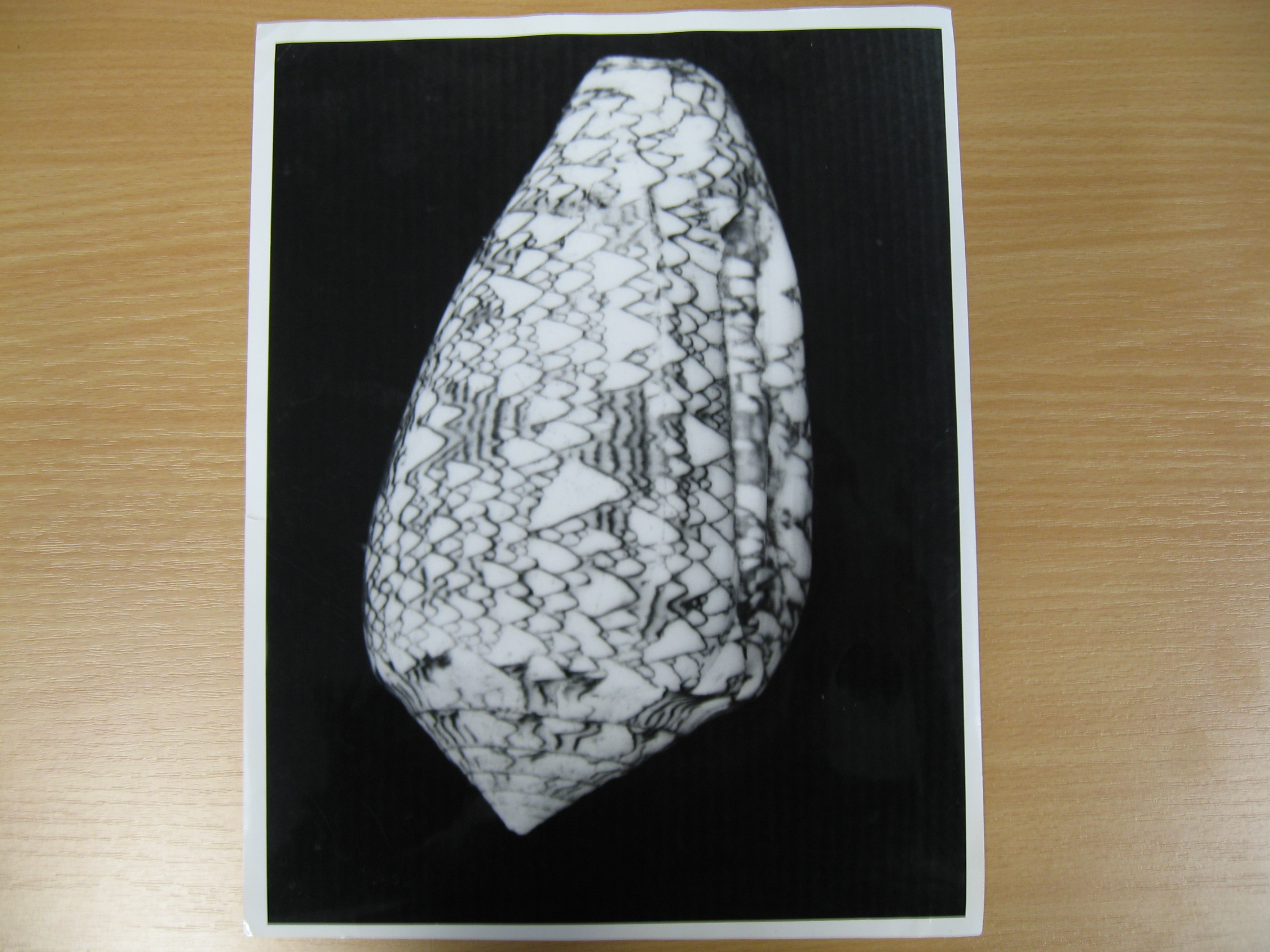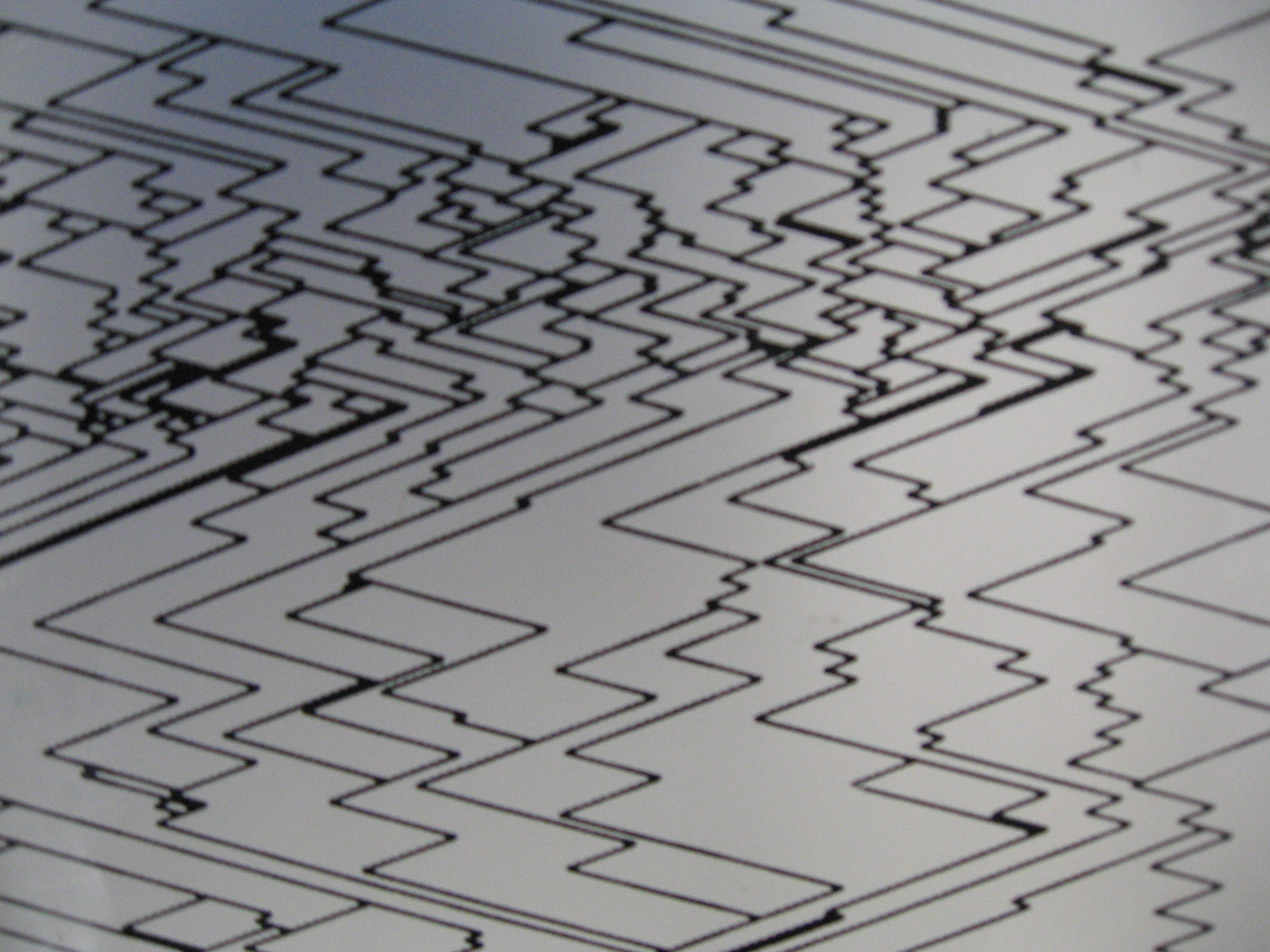As we saw on a post here two weeks ago, Waddington was very interested in exploring the processes by which the shapes and patterns of biological forms are brought into being (morphogenesis). These two pictures are part of a file relating to a short research project which Waddington conducted in collaboration with Russell J. Cowe, a programmer from the Department of Computer Sciences at the University of Edinburgh, between June and August 1968. Cowe worked with Waddington on the simulation of molluscan shell patterns using Computer-Aided Design. This project involved a computer programme being written (in Fortran, and worked out on an Eliot 4130 computer) which attempted to simulate the pattern on the shell and so provide some idea of the rules controlling how pigment is deposited during pattern formation, particularly the random factor determining points of initiation of diverging lines of pigment. The computer programme contained parameters controlling the density of random points of pattern initiation and different parts of the developing shell, and the angle of divergence of the lines.
The results, which were published as a paper entitled ‘Computer Simulation of a Molluscan Pigmentation Pattern’ in the Journal of Theoretical Biology (Vol. 25, No. 2, pp 219-25, November 1969), appear strikingly imaginative and futuristic considering the early date in computer technology!



Wonderful to see the work Waddington and I did on the pigmentation patterns project. Waddington had a large collection of many speces of sea shells. I wonder if they survived?
Russell Cowe
Now living in West Lothian and running a DVD / Blu-ray label.
Dear Russell,
Many thanks for your message about the work you did with Waddington – for me, it was one of the most memorable things to come out of cataloguing his papers. Interesting to hear about his collection of shells. If they have survived, I imagine they would be part of the University’s Natural History collections – worth enquiring about! Best wishes, Clare (Project Archivist)
Clare, I wrote a couple of follow ups: one for the University Bulletin, and one for the British Computer Society. It was awarded best paper of 1970 and I presented it at Datafair ’71 at Nottingham University to a crowded auditorium. It was selected for the first Auerbach compilation “Best Computer Papers 1973”, which also included papers by Roland Ibbot (Computer Science) and Frank Sumner – who invented pipeling instruction processing at Manchester University.
Russell